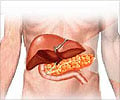Study finds individuals with ethanol in their bloodstreams appear less likely to die following a moderate to severe head injury
A report in the September issue of Archives of Surgery, one of the JAMA/Archives journals says that individuals with ethanol in their bloodstreams appear less likely to die following a moderate to severe head injury.
Each year, 2 million Americans sustain traumatic brain injuries and 56,000 die as a result, according to background information in the article. Alcohol use had been implicated as a risk factor for all types of trauma, and up to half of hospitalized trauma patients are intoxicated when they are injured. "Despite these associations between alcohol and trauma, very little is known regarding the pathophysiologic implications of ethanol on traumatic brain injury," the authors write. "Experimental animal studies suggest that ethanol may have a neuroprotective effect, though results are conflicting."Ali Salim, M.D., of Cedars-Sinai Medical Center, Los Angeles, and colleagues analyzed data from 38,019 patients with moderate to severe traumatic brain injuries whose blood ethanol levels were tested on admission to the hospital between 2000 and 2005.
Of these, about 38 percent (14,419) tested positive for ethanol. Those who did tended to be younger (37.7 years vs. 44.1 years), have less severe injuries and spend less time on a ventilator or in the intensive care unit than those with no alcohol in their bloodstreams.
About 9 percent of the patients died in the hospital, including 7.7 percent of those with alcohol in their bloodstreams and 9.7 percent of those without. "The decrease in mortality was tempered by an apparent increase in complications for patients with positive serum ethanol levels, a finding consistently reported in the literature," the authors write.
How ethanol might be associated with a reduced risk of death in patients with brain injuries is unknown, the authors note. "Several traumatic brain injury animal studies demonstrated improved mortality, reduced cognitive impairments, decreased contusion volume and improved motor performance with the preinjury administration of low doses of ethanol compared with placebo," they write. "These beneficial effects are apparently lost at higher doses." Other animal studies, however, indicate an association between ethanol and decreased survival.
"The sociologic implications are important and have been raised previously," the authors write. "It is important to note that we examined in-hospital mortality as our outcome measure. It is well established that alcohol contributes to nearly 40 percent of traffic fatalities and the risk of dying is obviously increased while driving under the influence. However, the finding of reduced mortality in traumatic brain injury patients with pre-injury ethanol raises the intriguing possibility that administering ethanol to patients with brain injuries may improve outcome." Further studies are needed to investigate the mechanisms behind this association and potential therapeutic implications.
Source-Eurekalert
RAS
 MEDINDIA
MEDINDIA




 Email
Email










